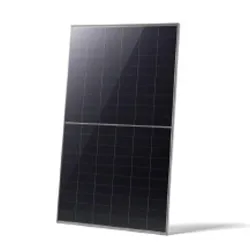Comparing Monofacial and Bifacial Solar Panels for Enhanced Efficiency and Performance Analysis
Monofacial vs. Bifacial Solar Panels A Comprehensive Comparison
As the world shifts towards sustainable energy solutions, solar power continues to gain traction as a viable alternative to fossil fuels. Within the solar industry, a critical distinction exists between monofacial and bifacial solar panels. These two types of photovoltaic (PV) technologies are prominent in residential, commercial, and utility-scale applications, each with its own advantages and disadvantages.
Monofacial Solar Panels
Monofacial solar panels are the most commonly used type in the market. These panels have photovoltaic cells on one side, the front, which is exposed to sunlight. The back side, typically a solid backing made of aluminum or glass, primarily serves as a structural component that protects the solar cells.
One of the key advantages of monofacial panels is their simplicity and established technology. They have a proven track record of performance and reliability. Due to their widespread use, they also tend to be less expensive than bifacial panels, largely because of the streamlined manufacturing processes and a more significant production scale. These panels are designed to absorb sunlight directly from the front and are most effective when installed in locations with minimal shading.
However, monofacial panels do have limitations. They primarily convert sunlight into electricity when it strikes the front surface, making their energy output dependent on direct solar exposure. In applications where ground reflectivity is low—such as on dirt or asphalt—the energy yield can be less than optimal. This factor leads many developers to seek alternative solutions that can capitalize more effectively on available sunlight.
Bifacial Solar Panels
monofacial vs bifacial

Bifacial solar panels provide a more innovative approach to harnessing solar energy. Unlike monofacial panels, bifacial panels feature photovoltaic cells on both sides, allowing them to capture sunlight from both the front and the rear. This design enables bifacial panels to take advantage of reflected light from the ground and surrounding surfaces, potentially increasing their overall energy output.
One of the most significant benefits of bifacial panels is their enhanced energy production capabilities. They can yield 10% to 30% more energy compared to their monofacial counterparts, depending on the installation environment and reflectivity. This characteristic makes them particularly well-suited for ground-mounted systems in snowy areas, where sunlight reflects off the ground and increases efficiency, or installations over lighter surfaces such as white concrete.
However, bifacial panels also come with their challenges. They are generally more expensive due to their complex design and higher production costs. Additionally, to realize their full potential, careful consideration of installation conditions, including ground cover and orientation, is essential. Inadequate planning can negate the benefits of the bifacial design.
Conclusion
In summary, both monofacial and bifacial solar panels have unique advantages that can serve different applications and preferences in the energy market. Monofacial panels are cost-effective and reliable, making them suitable for many conventional installations. In contrast, bifacial panels offer significant efficiency gains through dual-surface energy collection, appealing to those seeking maximum output from their solar investments.
Ultimately, the choice between monofacial and bifacial panels should depend on site conditions, budget, and energy goals. As solar technology continues to evolve, it is essential for consumers and developers to assess their specific needs to determine which type of solar panel will best serve their energy requirements. By understanding the differences between these two technologies, stakeholders can make informed decisions that contribute to a more sustainable and energy-efficient future.
-
Unlocking Energy Freedom with the Off Grid Solar InverterNewsJun.06,2025
-
Unlock More Solar Power with a High-Efficiency Bifacial Solar PanelNewsJun.06,2025
-
Power Your Future with High-Efficiency Monocrystalline Solar PanelsNewsJun.06,2025
-
Next-Gen Solar Power Starts with Micro Solar InvertersNewsJun.06,2025
-
Harnessing Peak Efficiency with the On Grid Solar InverterNewsJun.06,2025
-
Discover Unmatched Efficiency with the Latest String Solar InverterNewsJun.06,2025







